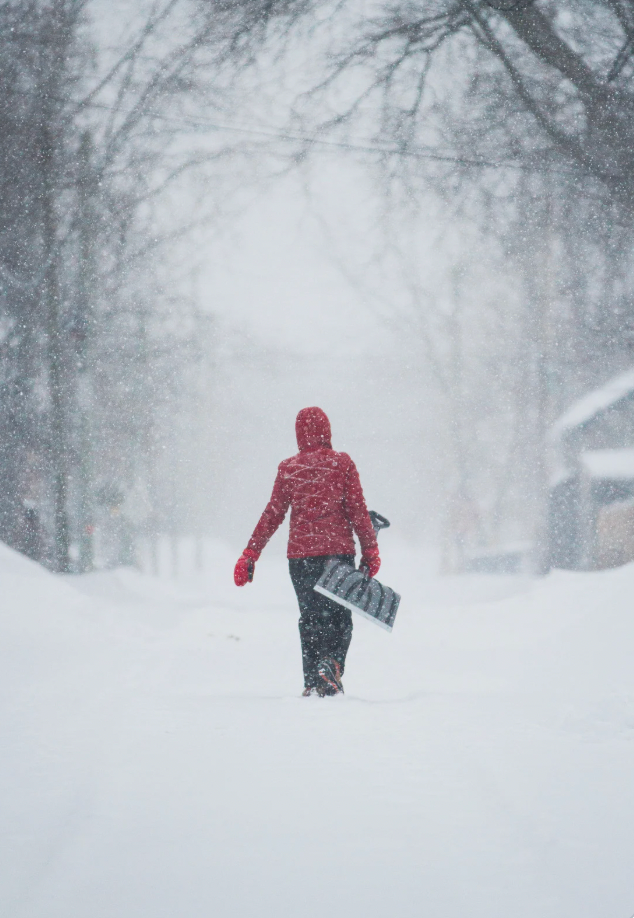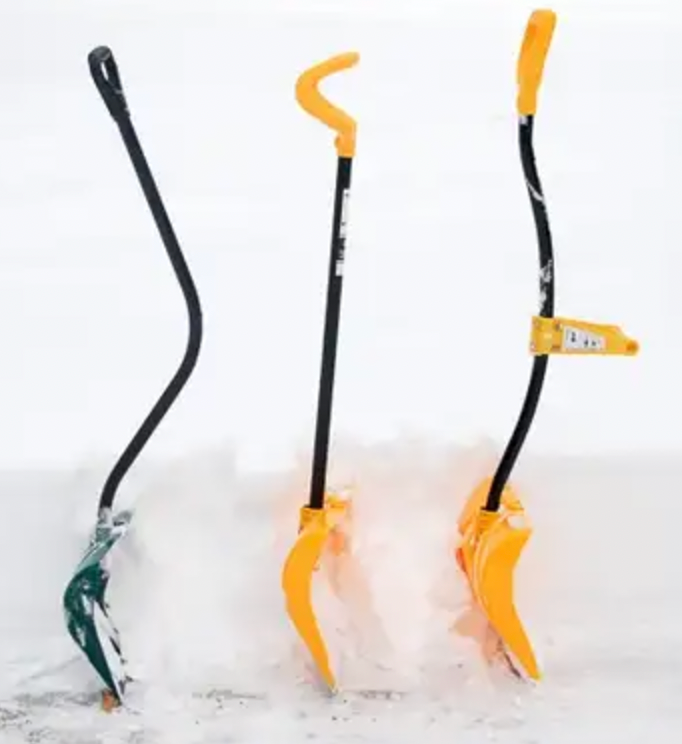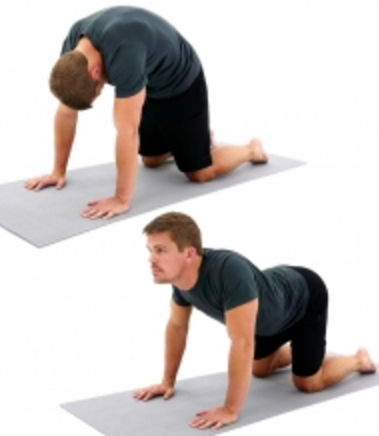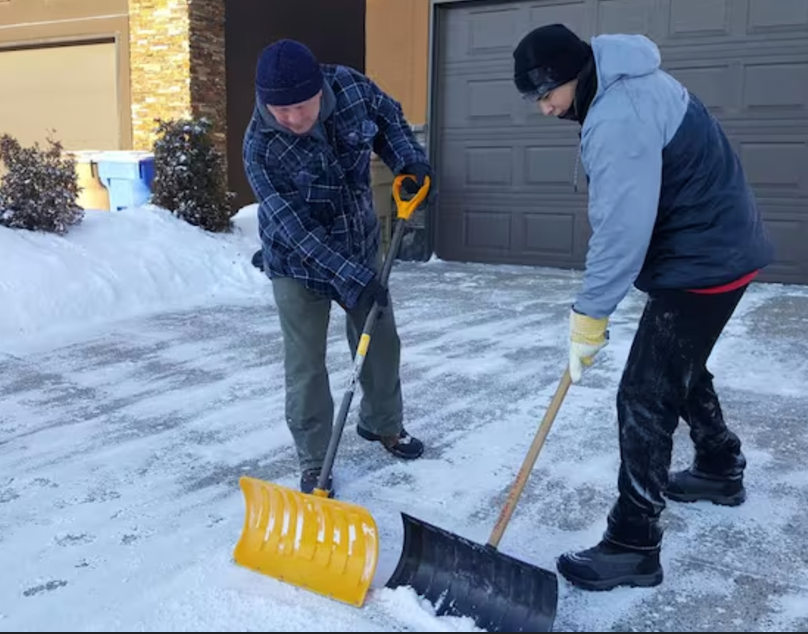Ergonomic Snow Shoveling: Protect Your Back This Winter
- Dr. Nicole Ballantyne

- Jan 29
- 3 min read

Winter is here, and with it comes the inevitable task of snow shoveling. While it might seem like a simple chore, improper snow shoveling technique can lead to muscle strain, back pain, and even serious injuries. My goal is to help make sure you stay safe, active, and pain-free throughout the winter season.
Here are some ergonomic snow shoveling tips to help you avoid injury while keeping your driveway and walkways clear:
1. Choose the Right Shovel
Lightweight & Properly Sized: Opt for a shovel that’s easy to handle and comfortable for your height. A lightweight shovel will reduce strain, while a long handle will help you avoid bending over too much.
Ergonomic Design: If possible, choose an ergonomic shovel with a curved handle. This design can reduce the strain on your back and wrists by allowing you to maintain a more natural posture.

2. Warm Up Before You Shovel
Just like any physical activity, warming up is essential to avoid injury. Perform a few light stretches to get your muscles ready. Focus on the lower back, legs, and shoulders—these are the areas most involved in snow shoveling. Some great stretches include:
Cat-Cow Stretches to loosen the spine
Hip Flexor Stretches to ease tension in the lower back
Hamstring Stretches to prepare the legs for lifting

3. Use Proper Posture
When shoveling snow, it's important to maintain proper posture to avoid straining your back. Here’s how to do it:
Stand tall: Keep your back straight and avoid bending at the waist.
Bend your knees, not your back: Squat down to lift the snow, using the strength of your legs rather than your back.
Lift with your legs: As you lift the shovel, use your leg muscles to rise—don’t twist your back or torso.
Pivot, don’t twist: Instead of twisting your body, pivot your feet to turn and throw the snow to the side.
4. Take Frequent Breaks
Shoveling snow can be surprisingly taxing on your body, so be sure to take regular breaks to avoid overexertion. Rest every 10 to 15 minutes to prevent muscle fatigue, and hydrate during breaks to avoid cramping.
5. Shovel Early and Often
Instead of waiting for snow to pile up, shovel small amounts throughout the day. It’s easier on your body to move a few inches of snow at a time rather than tackling a big load after a storm. Additionally, lighter loads reduce your risk of strain.
6. Consider Using a Snow Blower
If possible, using a snow blower can significantly reduce the strain on your body, especially if you have a large driveway or live in a snowy area. If you’re shoveling, keep your movements slow and steady—rushing increases your risk of injury.
7. Know When to Ask for Help
If you have a pre-existing back issue or are feeling particularly fatigued, consider asking for help. Snow shoveling doesn’t have to be a solo task, and you can always call on friends, family, or neighbours to lend a hand.

Bonus Tip: Listen to Your Body
Finally, always listen to your body. If you start feeling pain or discomfort, stop immediately. Pushing through the pain can lead to more serious injuries that could sideline you for the rest of the season.
Need Help? I'm Here for You!
If you experience back pain or muscle strain this winter, don’t hesitate to reach out. I'm here to help you stay pain-free, whether it’s through adjustments, stretches, exercises, or providing personalized advice for maintaining your posture during everyday activities.
Wishing you a safe and healthy winter season, and remember: a little prevention goes a long way in avoiding injury!






Comments